Beam vs Playbase vs Playbar: what’s the best Sonos TV speaker?
With Sonos now having three distinct soundbars on the market, which is the right one for you?

PICK ‘N’ MIX
When it comes to Sonos, it used to be simple: if you had a wall-mounted telly, you wanted the wall-mountable Playbar, and if your TV stood on some sort of furniture you’d be better served by the Playbase. But now Beam has entered the fray and made things a little more complicated. So allow me to help you way up the pros and cons of each so that you can be sure you’re choosing the right Sonos speaker for you.
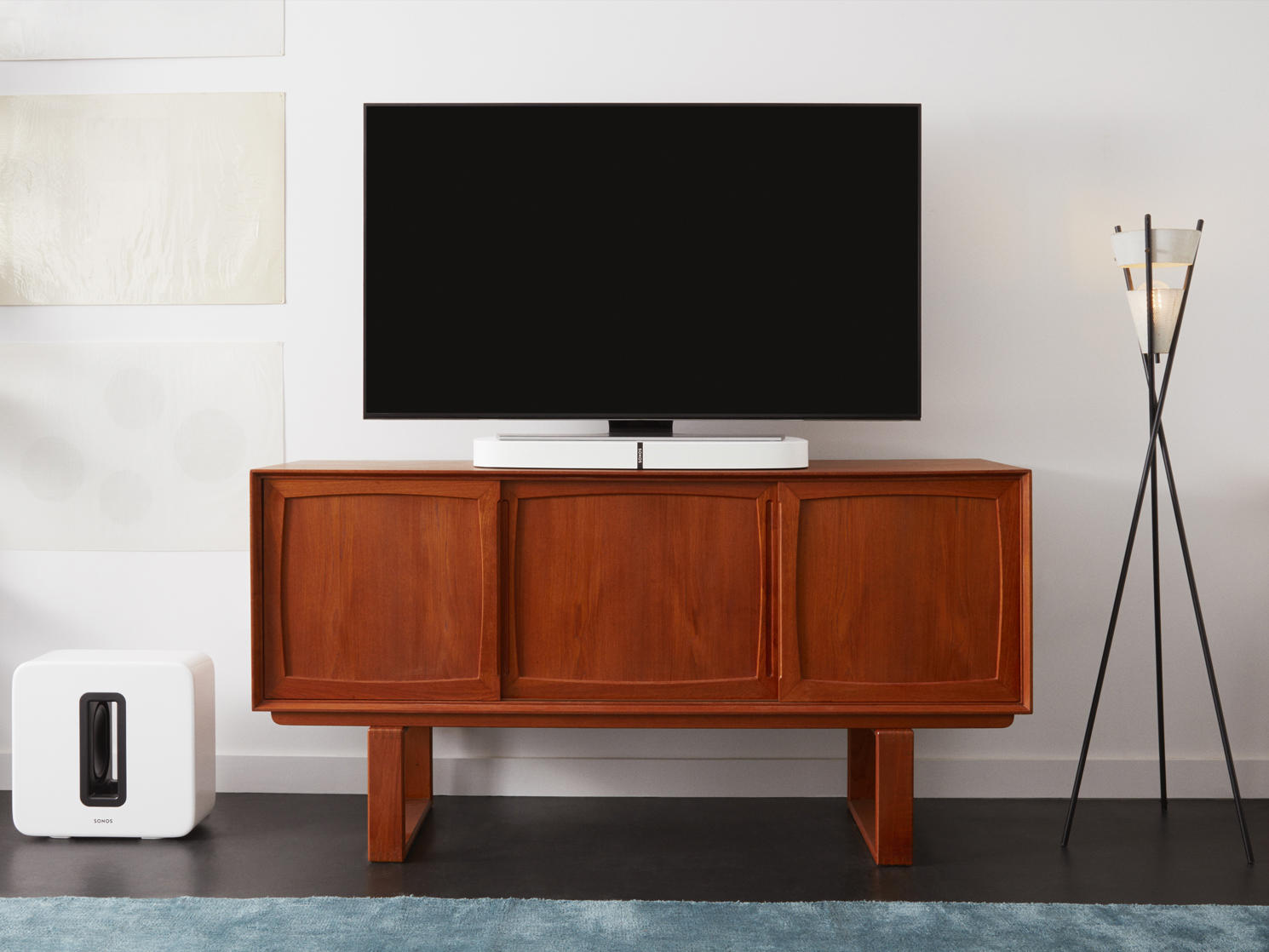
PRECISION PLACEMENT
Let’s deal with the placement consideration first. What if, like most people, you’re mounting one of these soundbars on a shelf or TV stand? The Playbar is your worst option in this scenario. It was initially sold on its ability to fit in with both wall-mounted and pedestal-stood TVs, but there are flaws. The biggest of which is that the ‘feet’ of the thing are on the side of the Playbar, which is against the wall if you were wall-mounting. What that means is that while the speakers fire forward if you wall-mount, they fire upwards if standing on a piece of furniture, which leads to quite an indirect sound. Yes, you can stand the Playbar on the ‘wrong’ side if you like, but that leaves you with raw metal against the surface of your furniture.
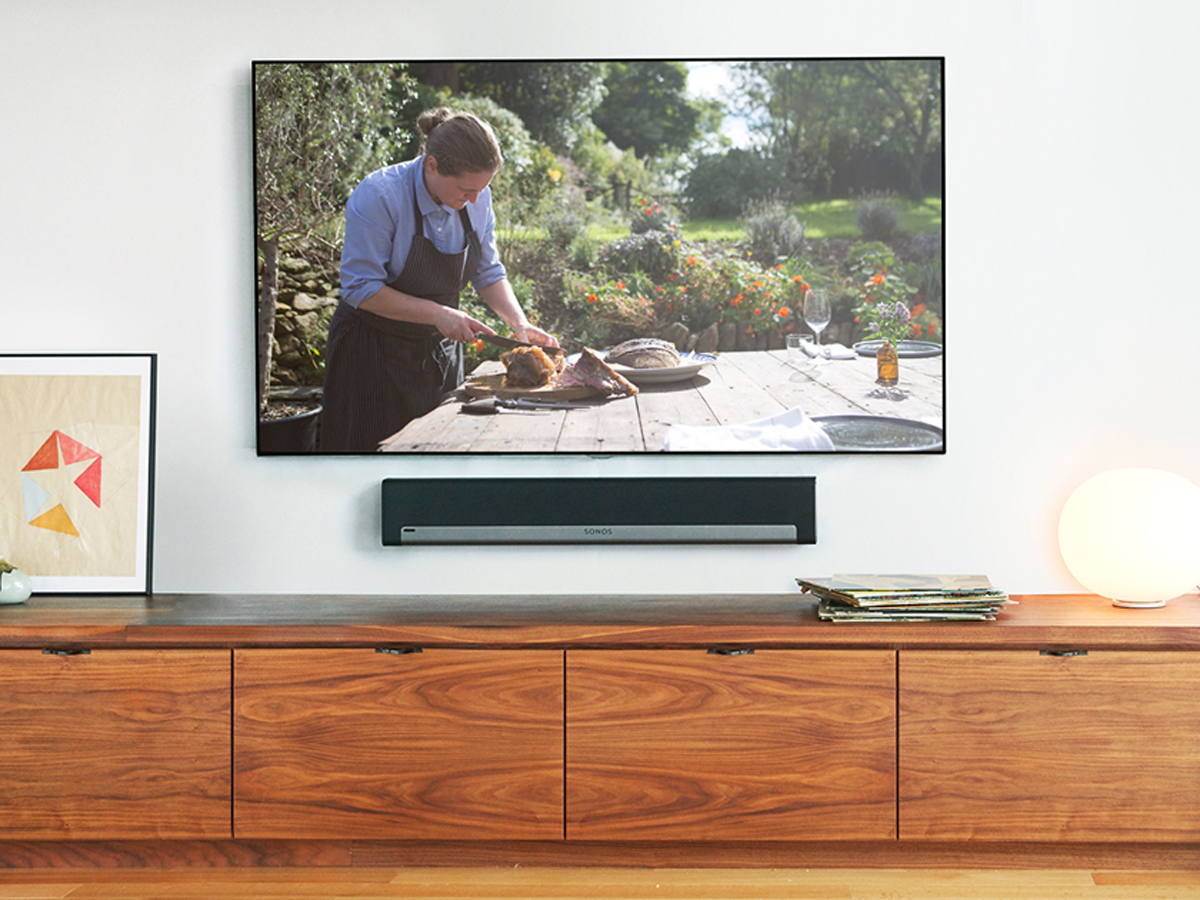
A BETTER FIT
The Beam is much more suitable for the job of sitting on a shelf, because its audio drivers face forward for a more direct sound. Also, it fits much more flush against the wall than the Playbar if you do decide to wall-mount in future. If you want the best sound for a shelf-stacked AV setup, then Playbase is the one to go for. It provides a big flat surface for your TV to stand upon and will support up to 35kg, which is more than almost any modern TV.
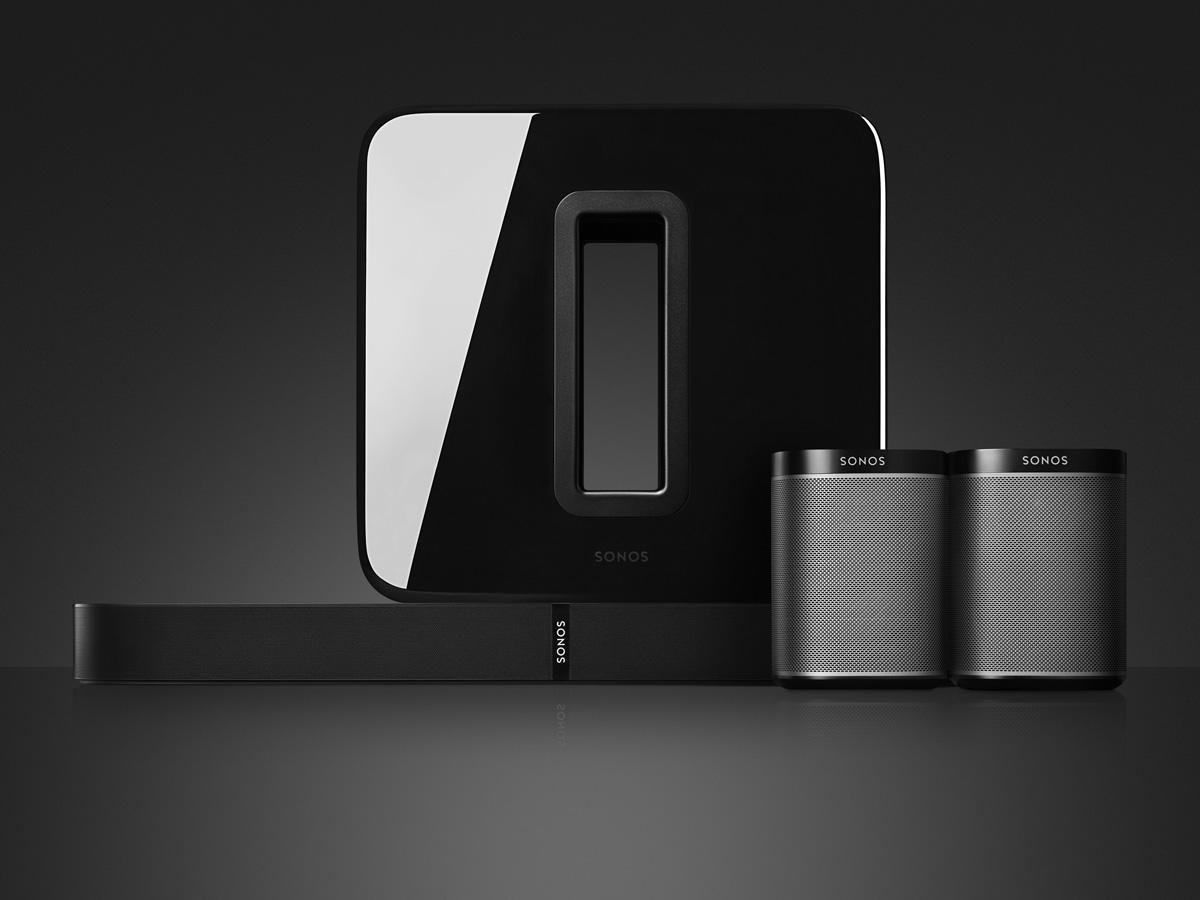
CREATURE FEATURES
The Playbase and Playbar are practically inseparable when it comes to features, leaving the newer Beam to dominate when it comes to smarts. The connections on both are equally simple and sparse: you get power, optical and ethernet. The Playbar actually gets two of the latter so you can daisy-chain a couple of devices, but it’s not something that many people will take advantage of so not worth getting too excited about. With Playbase and Playbar, you connect all of your sources to your TV via HDMI just as you probably already do, and then send the audio from the TV to the Sonos via optical cable. Both handle Dolby Digital 5.1 and not a lot else besides, and both can be upgraded to full surround with a pair of Play:1, Play:3 or Play:5 speakers.
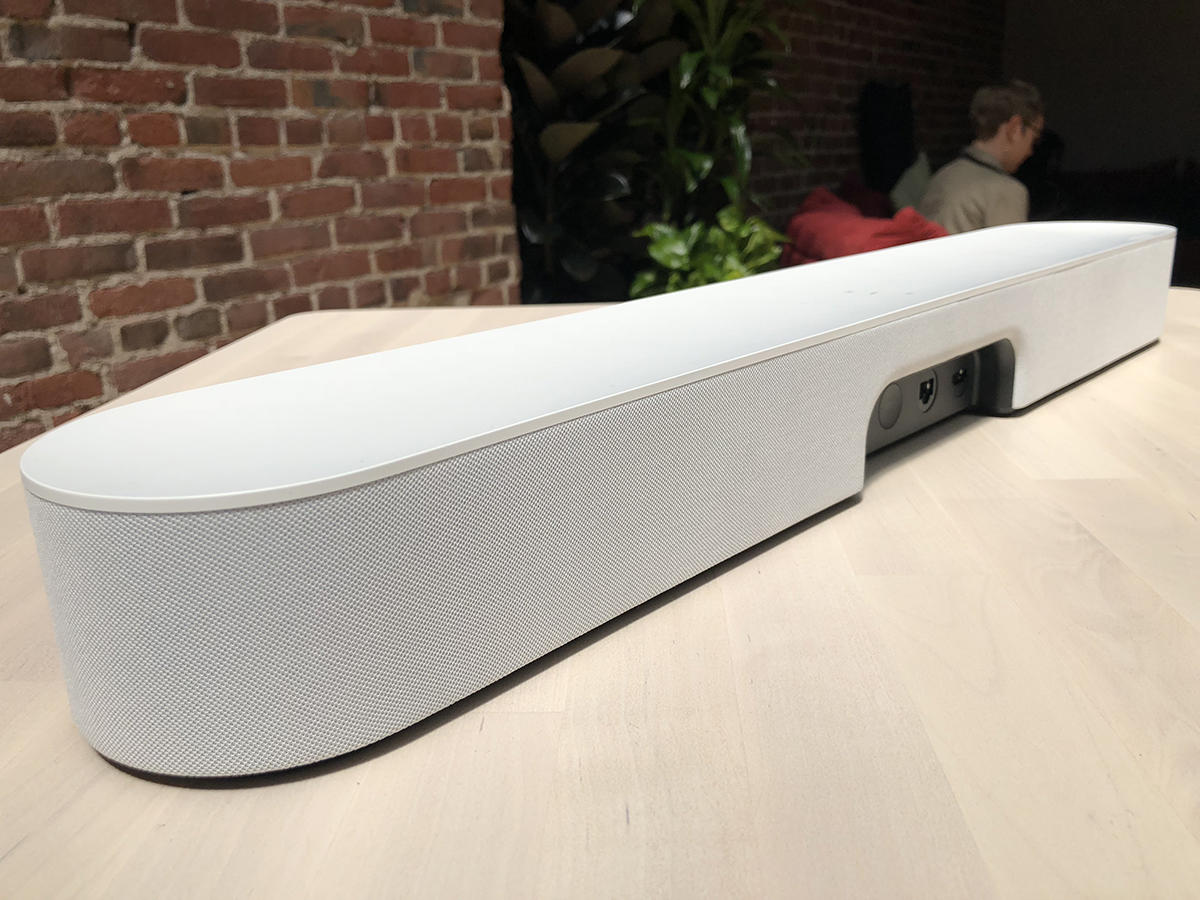
BEAM ME UP
Beam, however, does things a little differently. It uses a HDMI cable out from your TV to manage the audio, but this connection also allows it to control the TV, such as turning it on or off or controlling the volume. What’s more, Amazon Alexa integration means you can do everything using your voice, and control other devices around the home. Oh, and AirPlay integration means you can send audio straight from your Apple device rather than using the app. AirPlay is also on Playbase, but sadly not the older Playbar. Whatever product you choose, can use Sonos’ clever Trueplay feature (assuming you’re an iPhone user) to tailor the sound of either speaker to your room, and both get the full suite of Sonos music streaming features, so perfectly synchronised multi-room and access to practically every streaming service under the sun.
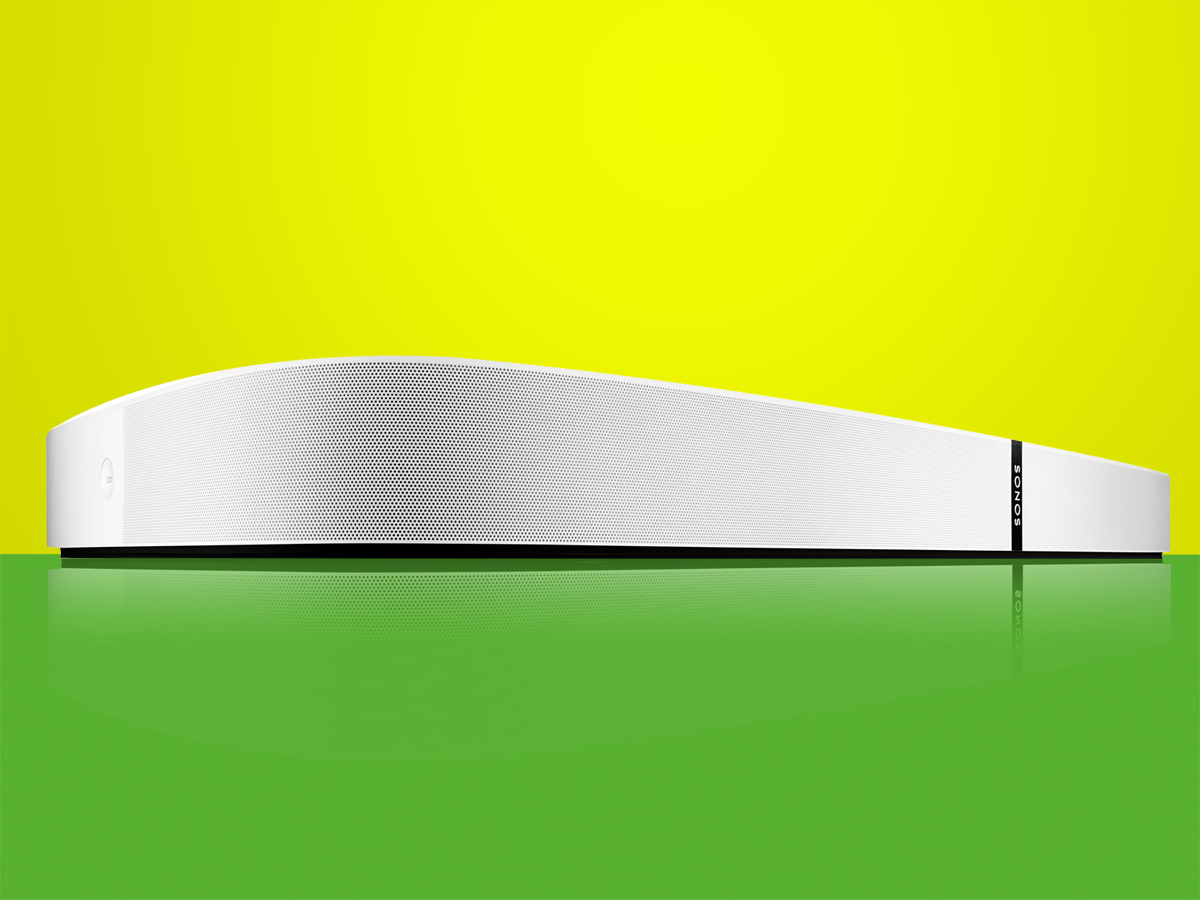
AUDIO SHOWDOWN
Now this is where things get interesting. With fewer sound-generating components, Beam can’t compete with the Playbar or the Playbase when it comes to pure audio quality. It won’t be that noticeable for most people, and you can mitigate the lack of bass by adding a SUB, but based on sound overall, it has to be counted out early. Between the Playbar and the Playbase, Sonos says you should choose based purely on placement and that the sound is largely the same, but that’s not really the case. Sure, there are lots of similarities: both do a brilliant job of creating a spacious sound stage that will easily fill most rooms, and both exemplify Sonos’ dedication to natural, neutral sound so that you feel that what you’re hearing is more or less what was recorded.

SOUNDING OFF
But there are also quite big differences. The Playbase’s larger cabinet and clever woofer design make it more naturally bassy, and the delivery is chunkier, weightier and more nuanced at the bottom-end as a result. It’s also crisper, punchier and a little more detailed than the Playbar. But the Playbase also has an overly zingy and sibilant treble that makes cymbals, snares and the esses in vocals too pronounced and sharp The Playbar is a little softer by comparison, but while that makes its audio a bit less punchy and exciting overall, it also means it’s not got the same harshness in the treble and, ultimately, that’s the preferable choice. Essentially, the Playbar has a few minor sonic flaws, but the Playbase’s one flaw is a bigger one, which is why in the sound round the Playbar just edges it.

ONE SONOS TO RULE THEM ALL
So, the Beam is the soundbar to get from Sonos for most people. It sounds great, is packed with features and slips into any AV setup with the minimum of fuss. But don’t discount the other two soundbars. The Playbase and Playbar both sound even better than Beam, and are just as easy to integrate into your home cinema system. Neither of them will control your TV, but there are Logitech Harmony remotes for that, nor do they pack Alexa, but in 2018 you’ve probably already got an Alexa device in your living room that you can tell to play Leon Bridges on your Sonos.


